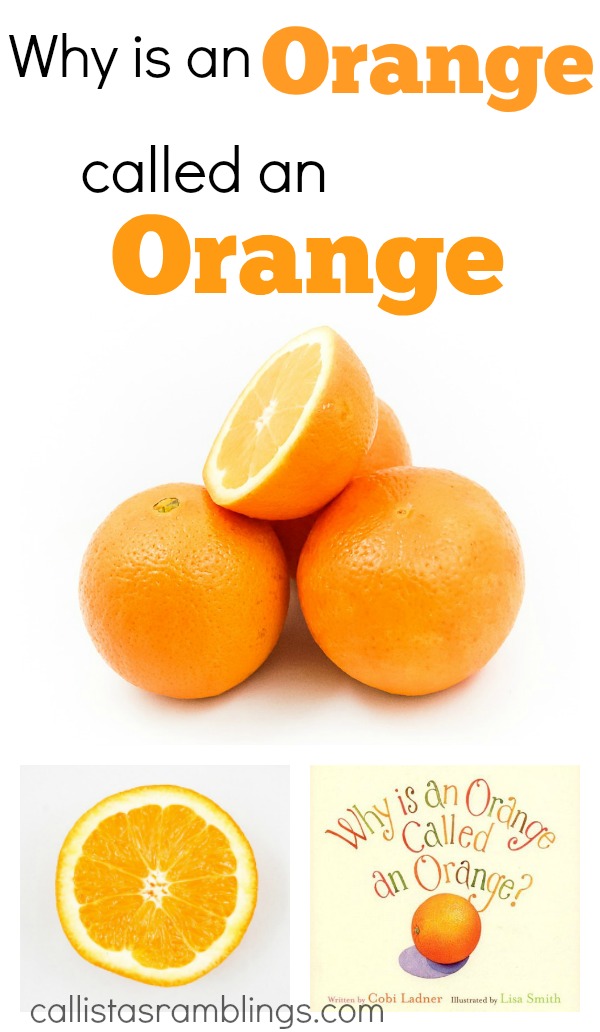Reading Why is an Orange Called an Orange? by Cobi Ladner inspired me to look into this question. I thought I’d share my findings here on why is an orange called an orange.

This post contains affiliate links
The book asks why an Orange is called an Orange if a Banana is not called a Yellow and Blueberries aren’t called Blues.
What I didn’t realize is that the fruit wasn’t named after the colour. The colour got it’s name from the fruit.
Why an Orange is Called an Orange
The word orange comes from Sanskrit nārangah (orange tree). Other European languages adapted the word – Persian nārang, Armenian nārinj, Arabic nāranj, (Spanish naranja and Portuguese laranja), Late Latin arangia, Italian arancia or arancio, and Old French orenge, in chronological order. The first appearance of the word Orange in English is from the 14th century.
Before this was introduced to the English-speaking world, the colour was referred to (in Old English) as geoluhread, which translates into Modern English as yellow-red.
The first recorded use of orange as a colour name in English was in 1512, in the court of King Henry VIII.
The name of the colour is derived from the fruit, first appearing in this sense in 1542.
Extra for word-lovers:
The forms of the word starting with n- are older (like naranja), and this initial n- may have been mistaken as part of the indefinite article, in languages with articles ending with an -n sound (e.g., in French une norenge may have been taken as une orenge), a process called juncture loss.
Sources:
Wikipedia – Orange (fruit)
Wikipedia – Orange (colour)




Speak Your Mind